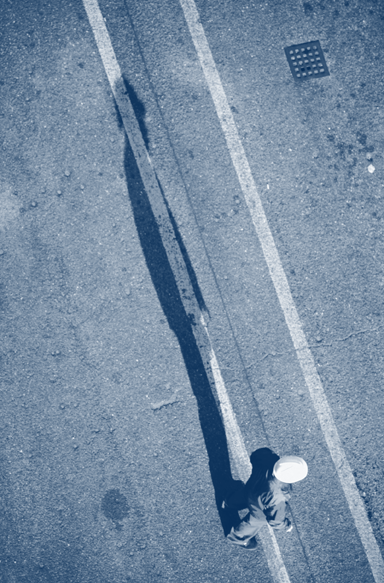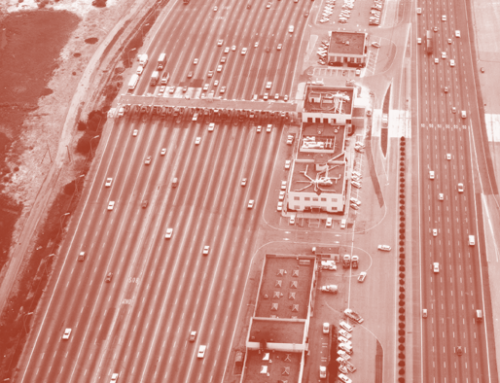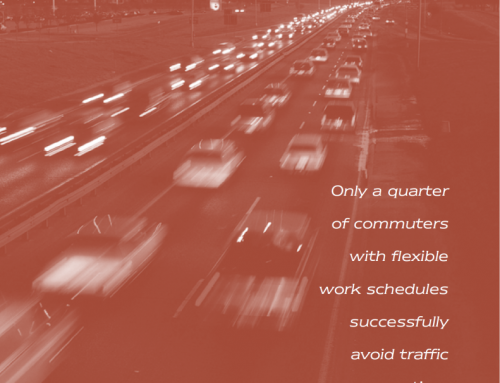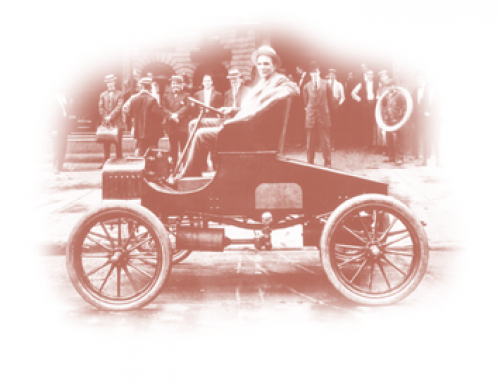A new-laid stretch of pavement is not a finished product. Traffic pounds it; hot sun heats and expands it; water gets inside and washes away the soil beneath. Depending on these forces and the quality of its design and construction, a pavement will last only a limited time before it needs repair or replacement. Because there are so many factors involved, it’s not possible to just schedule a replacement in x number of years. The pavement has to be checked periodically for potholes and cracks and ruts. Visual and manual inspections can be slow, hazardous, and fraught with uncertainty. But that’s the way it’s always been done.
Now, however, there is a whole range of new technologies available that can quickly, accurately, and safely check the current condition of a pavement. Although the tools and techniques are not cheap, they can potentially save a lot of money by permitting accurate diagnosis and rational management, thus eliminating unnecessary repairs. But the technology itself is not enough. Agencies in charge of maintaining pavements need first to accept these technological developments and then the organizational changes they imply.
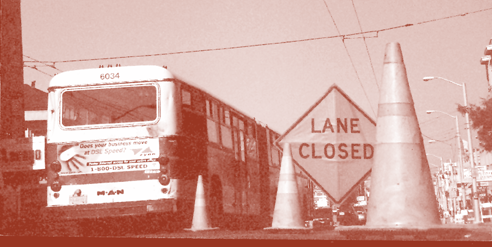
Current Pavement Management
Highway agencies developed what they call pavement management systems to provide systematic pavement maintenance and repair. Regular inspections record current conditions such as cracking, rutting, roughness, and skid resistance. A common way to use this information is to consolidate it into a single number, such as the Pavement Condition Index. Managers then correlate the PCI with the pavement’s age and predict when the PCI will fall below a standardized level. Then, plans can be made for future maintenance, repair, or reconstruction of the pavement.
High-speed surveying systems can provide in-depth pavement inspection with a level of detail and accuracy never before attainable.
But there’s lots of room for uncertainty in these methods. Surface conditions only hint at a problem’s underlying causes. Although an experienced engineer can make a very good guess about what makes a road crack in a particular way, it’s still a guess. The information that goes into the index is subject to errors, from sources as diverse as technological limitations of inspection equipment, imprecise data, and human error in processing. The performance-prediction models themselves create some uncertainty. These possible errors compound, increasing the likelihood of a wrong maintenance decision. Prediction models try to account for these uncertainties by creating a broad range of decision possibilities, but basically it’s difficult to choose precisely the right repair. And any time a wrong choice is made, costs go up.
New Inspection Technologies
During the past ten to fifteen years there has been rapid introduction of automated high-speed pavement-condition inspection technologies. Commercial systems now available can continuously measure and record the type, degree, and intensity of cracking; the width, depth, and profile of rutting; and the thickness of the pavement layer, all at normal driving speed. These high-speed surveying systems can provide in-depth  pavement inspection with a level of detail and accuracy never before attainable.
pavement inspection with a level of detail and accuracy never before attainable.
Because they can collect information at driving speed, they dispense with the need to block lanes, disrupt traffic, and endanger workers. They also are not subject to the same limitations as older methods, as for example when estimating cracking, conventionally a slow process involving visual observation and manual measurement. Video and laser crack detectors now identify and measure cracks quickly and accurately. Ground- penetrating radar provides invaluable and heretofore unattainable information about pavement layer thickness. And rutting can be spotted and accurately measured with optical, laser, or ultrasonic sensors.
The revolutionary aspect of these new technologies, the thing that could change the way pavements are repaired and maintained, is the simultaneous collection of all these separate bits of information over a single stretch of pavement. No longer is it necessary to correlate piecemeal evaluations of separate factors and then guess at underlying causes. These new methods can create a complex picture of a pavement’s condition, evaluating multiple factors over a specific distance.
The Institutional Challenge
Current pavement management systems work well enough, given the real limitations of equipment. Even the PCI is an acceptable, if cumbersome, way to use complex and uncertain information. But the advent of new technologies offers an opportunity and a challenge to highway agencies to do better.
Merely obtaining equipment and training is not enough to assure cost savings from these new methods. Instead, the pavement management system itself needs to be reformulated. I recommend four institutional changes to exploit all this newly available information and promote better maintenance decisions.
Although an experienced engineer can make a very good guess about what makes a road crack in a particular way, it’s still a guess.
First, stop compiling and summarizing the information into a single index. Clearly, all the information pouring out of these new machines will go to waste if managers continue to reduce the information to one generic number. Instead, develop a 3-D image that connects the various kinds of information and gives a more complete picture of pavement condition.
Second, because we can see a deeper and more complex picture of the pavement, we can develop new computer-based predictions that eliminate much of the uncertainty managers must now account for in their plans. For example, cracking is caused either by fatigue or by rapidly changing temperatures. Fatigue is a result of strain in the pavement structure, which in turn is a result of load (vehicle number and weight), layer thickness, and layer stiffness. On the other hand, thermal cracking is caused by thermal stresses resulting from daily temperature variations. Since load, temperature, and cracking can now be continuously and accurately measured, there is enough information to determine the exact cause of cracking. As a result of better understanding the causes, we can also predict the future rate of cracking and thus allow managers to make more exact maintenance decisions.
Third, change the process of making maintenance decisions. With less uncertainty, the need for caution in planning is lessened, so managers will be less inclined to overcompensate by ordering repairs that are premature and too extensive. For example, if managers have more confidence in their ability to predict pavement life, they can reduce the amounts of funds that are often set aside for emergency repair work.
Fourth, and perhaps most useful, develop adaptive models that can learn over time, creating an institutional memory. That is, instead of relying solely on the practiced eye of a human inspector who, through experience, has learned the likely causes of pavement problems, create a self-learning system. Adapting to feedback from real conditions as they change, such a system can adjust its predictions accordingly. Thus more and more accurate predictions based on complex information will become available over time.
The Real Fix
As they must in virtually every field, technological developments compel the agencies that adopt them to also adapt to them. New ways of attacking problems call for new styles of management and hence new modes of organization. As pavement management shifts from visual and manual inspection to automated monitoring, the roles of inspectors will necessarily shift as well. With demands for different skills than were  formerly sufficient, there will inevitably be demands for new staff equipped to supervise and apply the new electronics and optics. In turn there will be demands for revised methods of decision making and changed channels of authority.
formerly sufficient, there will inevitably be demands for new staff equipped to supervise and apply the new electronics and optics. In turn there will be demands for revised methods of decision making and changed channels of authority.
These necessary changes will not happen simply because they should. There is a very serious need for the research community to assist state and federal transportation agencies to improve their data-collection schemes, performance-prediction models, and decision-making procedures. In the 1980s, substantial research effort was directed towards developing the first generation of pavement and bridge management systems. A similar endeavor is needed now to modernize these systems, so that they can make the most of new technologies.
It will no doubt take a while before the new pavement-management techniques can be fully adopted, because responsible agencies will need time to adapt themselves to the new tools and techniques. There can be no question that they will—preferably sooner than later of course. And, once the institutions do adapt, the potholes and cracks will get fixed sooner, the maintenance budgets will be smaller, and the ride will be smoother.
Further Readings
Samer Madanat, “Incorporating Inspection Decisions in Pavement Management Systems,” Transportation Research, v. 27B, no. 6, Pergamon Press, 1993.
Samer Madanat and Moshe Ben-Akiva, “Optimal Inspection and Repair Policies for Transportation Facilities,” Transportation Science, v. 28, no. 1, 1994.
Ken Maser, Brian Bradmeyer, and Richard Littlefield, “Pavement Condition Diagnosis Based on Multisensor Data,” Transportation Research Record 11, 96 (Transportation Research Board, Washington DC, 1989).
Mohammad Shahin and Steve Kohn, “Pavement Maintenance Management for Roads and Parking Lots,” Technical Report M-294 (Construction Engineering Research Laboratory, US Army Corps of Engineers, Urbana-Champaign, IL, 1981).
Kelvin Wang, “Designs and Implementations of Automated Systems for Pavement Surface Distress Survey,” ASCE Journal of Infrastructure Systems, v. 6, no. 1, 2000.

